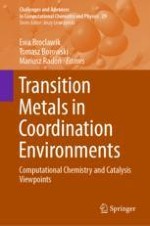2019 | OriginalPaper | Buchkapitel
Photodeactivation Channels of Transition Metal Complexes: A Computational Chemistry Perspective
verfasst von : Daniel Escudero
Erschienen in: Transition Metals in Coordination Environments
Aktivieren Sie unsere intelligente Suche, um passende Fachinhalte oder Patente zu finden.
Wählen Sie Textabschnitte aus um mit Künstlicher Intelligenz passenden Patente zu finden. powered by
Markieren Sie Textabschnitte, um KI-gestützt weitere passende Inhalte zu finden. powered by
